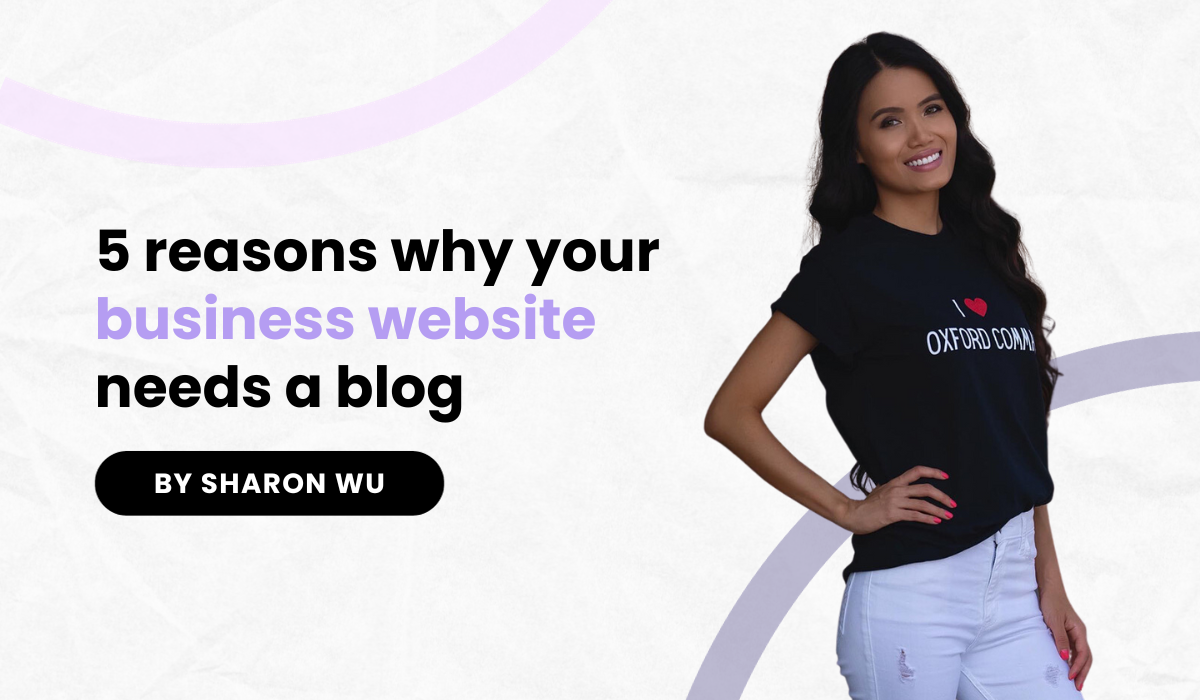After writing business blogs for almost a decade, I’ve seen firsthand how valuable blogging can be for a company’s website. Yet, many business owners are still hesitant to start a blog or don’t think it’s worth the effort.
Trust me — it is. A regularly updated blog keeps your site fresh, improves your SEO, and helps you connect with customers.
I’ve helped dozens of businesses and founders enhance their online presence and revenue with strategic blogging. And now, it’s your turn.
Buckle up for some key insights and actionable tips to help you launch a thriving blog for your business!
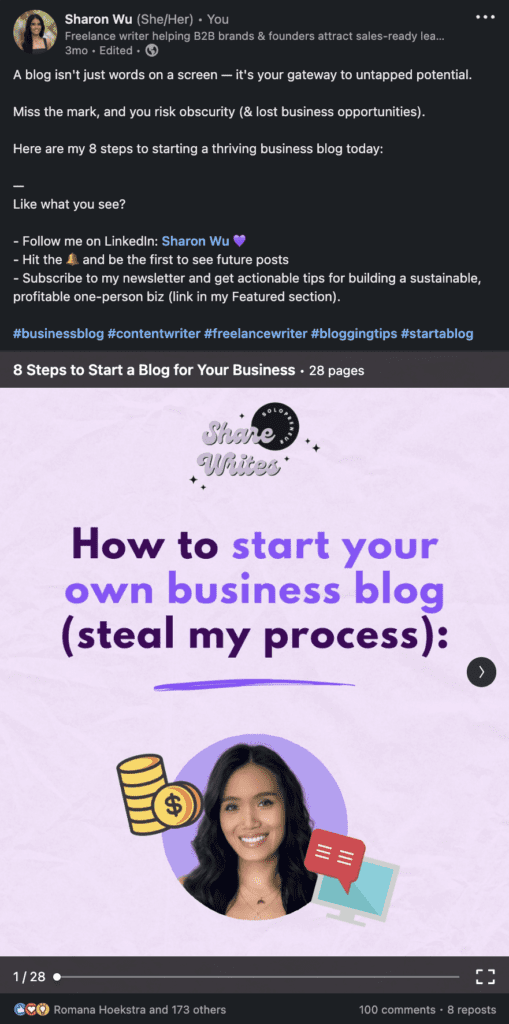
5 key benefits of starting a business blog
Some business owners don’t see the value of blogging yet. They think it’s too much work for little payoff.
But the data tells a different story…
1. Blogs boost organic traffic
One study found that companies that blog get 97% more links to their website than those that don’t. More incoming links typically lead to better SEO and more organic traffic over time.
For example, let’s say you’re a B2B SaaS company offering web accessibility solutions…
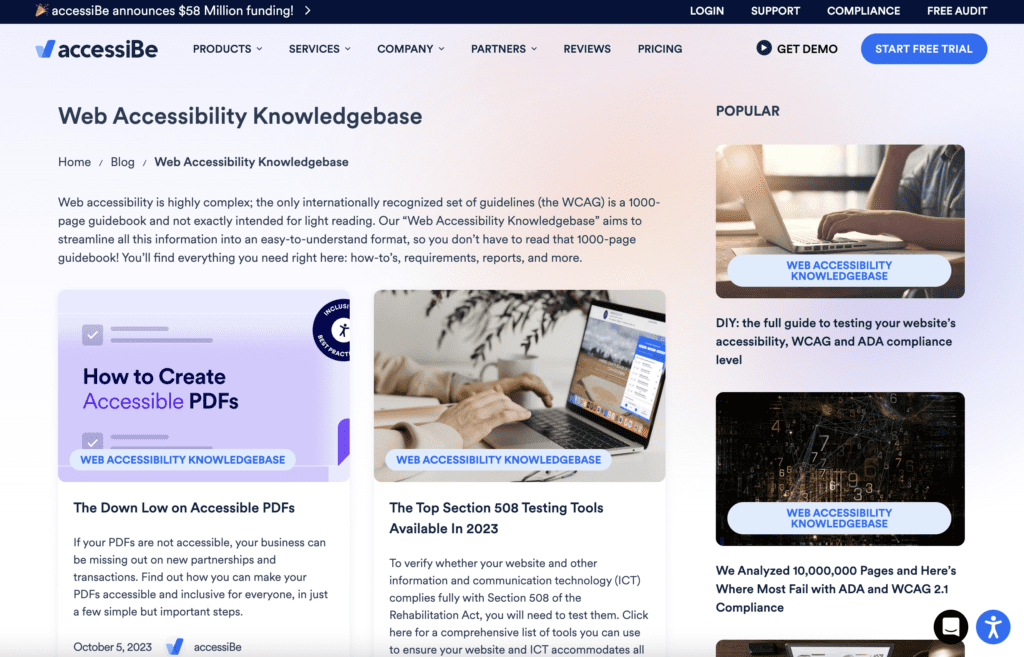
By publishing informative posts about Section 508 testing tools, how accessible PDFs work, and how to make a website ADA-compliant, for example, you can attract inbound links from other web accessibility websites, blogs, and resource lists.
This tells search engines like Google that your content provides value, leading to higher rankings and more organic visitors to your site.
2. Blogs build trust and credibility
Consistently publishing helpful, high-quality content on your blog demonstrates your knowledge and establishes you as an authority in your niche. This makes visitors likely to trust you, buy from you, or hire you.
Run a B2B payment processing SaaS?
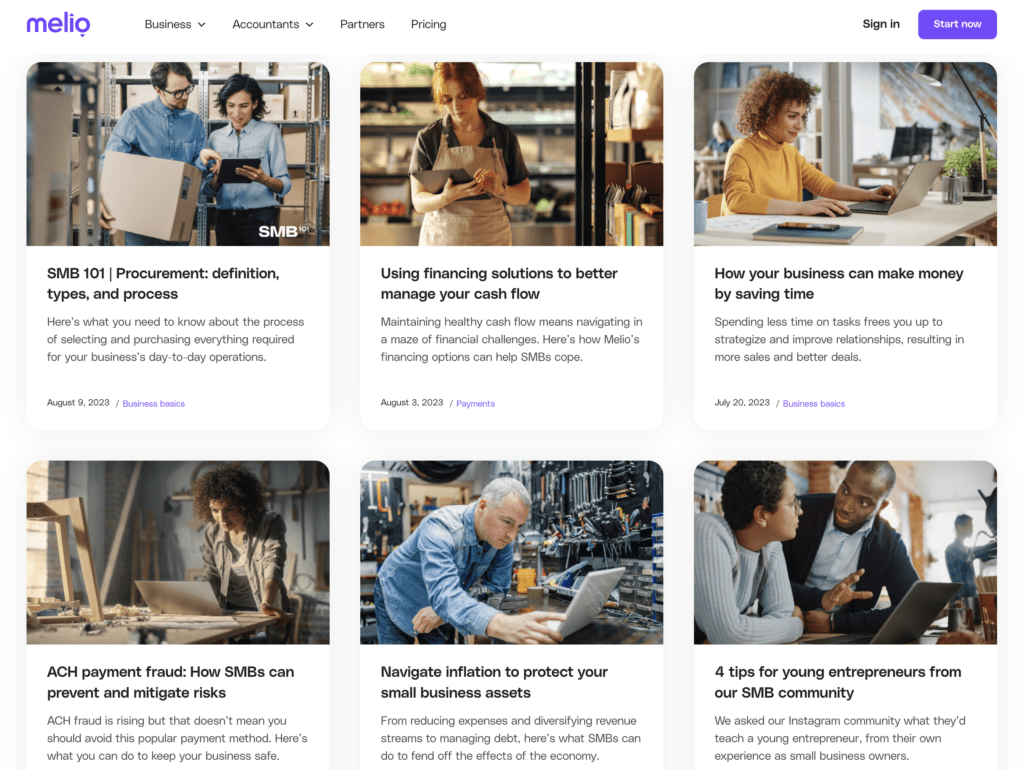
Regularly posting educational articles and thought leadership content demonstrates your expertise in fintech and digital payments. This establishes your authority on the subject, making B2B prospects more likely to trust your solution.
3. Blogs help convert visitors into leads
Your blog content gives potential customers and clients a taste of your skills and expertise. It shows you can provide solutions to their problems. The more value you provide through your blog, the more leads and sales you’ll generate.
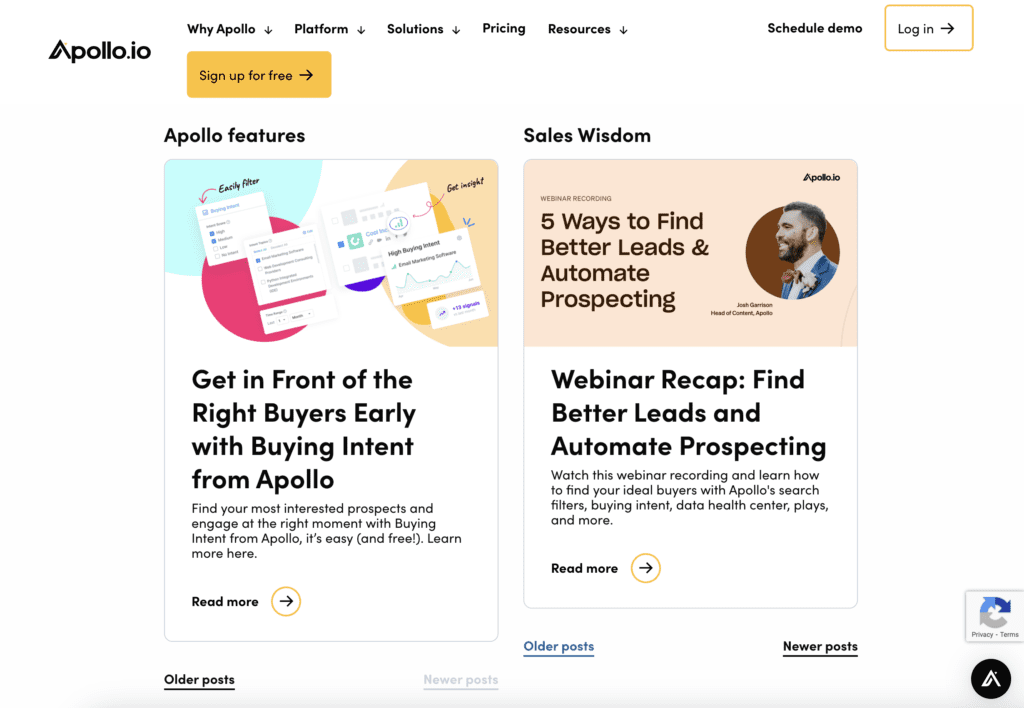
For instance, a sales intelligence SaaS provider could publish posts explaining common sales challenges and questions businesses face when sourcing leads and managing pipelines. A visitor struggling with lead gen who lands on that post may be convinced to give the SaaS company’s tools a try.
4. Blogs keep your website fresh
Google and other search engines favor websites with new, frequently updated content. An active blog shows crawlers your site is active and worth ranking in results.
Let’s say you offer email marketing software for small businesses…
Over time, having a stagnant site with just your features and pricing will cause you to sink in rankings. But writing ongoing posts about the latest trends in email marketing will keep your website current.
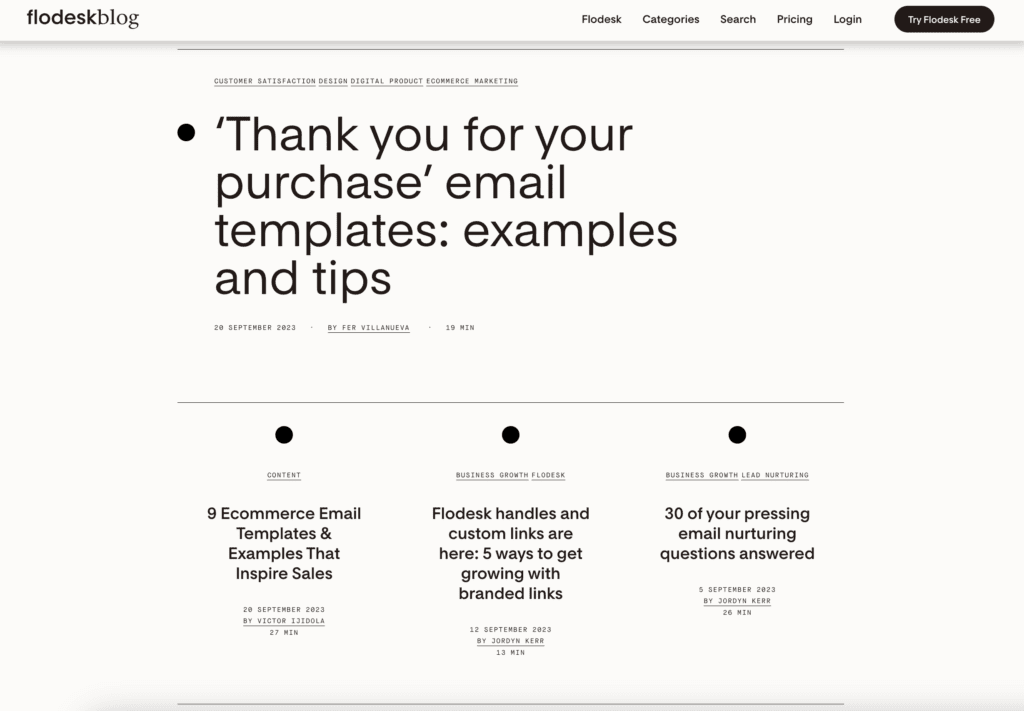
5. Blogs turn customers into brand advocates
When people like what they see, they’ll spread the word about you, your product, or your service to their friends and family. This is the best kind of marketing — and it’s free!
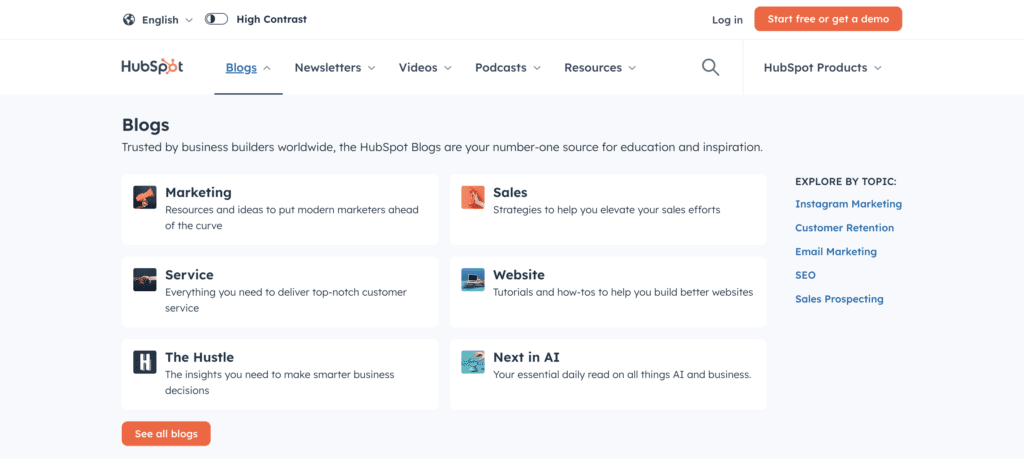
Hubspot is a perfect example of a B2B company that harnesses the power of community. They pack their knowledge base full of FREE valuable insights, knowing that people won’t be able to resist talking about their brand all over social media…

… Like I have on LinkedIn! This kind of word of mouth has helped them stay top of mind and reach many new prospects over the years.
Where to distribute your blog content
The best place to start blogging is on your company website. But you shouldn’t stop there. Distributing your content across other platforms expands your reach.
Here’s my go-to distribution strategy:
Start on your business blog
Your own website, hosted on a CMS platform like WordPress, should be the hub of your blogging efforts. All posts should first be published here to fully own your content.
From an SEO perspective, Google favors original content on dedicated domains. So self-hosting your blog is ideal.
Pro tip: Use a canonical URL tag when cross-publishing so search engines know your site hosts the original.
Cross-publish on LinkedIn
Once your post goes live on your site, republish it on LinkedIn’s publishing platform. This showcases your thought leadership to your professional connections.
LinkedIn posts appear prominently in your connections’ newsfeeds. This makes it easy to get your content in front of more potential customers.

Leverage Medium for extra exposure
Medium offers a simple blogging interface and a built-in audience of engaged readers. Republishing your posts here expands your reach to new readers.
This platform ranks well on Google, so you can take advantage of its domain authority. Just be sure to link back to the original post on your site.
How to craft a content strategy
Consistency is crucial for business blogging success. Sporadic posts whenever you feel like it won’t cut it. You need a strategic content strategy.
Set a regular posting schedule
Posting consistently, even if it’s just once a month, keeps readers engaged. But more frequent is better (as long as you’re not sacrificing quality). Aim for at least 2 blog posts per week to start.
For example, you could designate Tuesdays and Thursdays as your official blog post days. Draft content in advance so you’re ready to publish on schedule.
Find your blog niche
Don’t try to be all things to all people with your blog. Narrow your focus to a specific audience and niche topic to provide maximum value.
Your niche should ultimately align with your products, services, and industry. Become a thought leader in your niche by providing the specialized knowledge your audience craves.
I’m a freelance writer mostly writing for B2B brands and founders, and I’m also a mentor for new solopreneurs. So you can guess what I blog about on my website — blogging and content marketing tips, SEO tactics, and advice for new business owners.
Mix up your post types
Not every post has to be a long-form tutorial or thought piece. In fact, you should create content tailored to all stages of the marketing funnel.
Top-of-funnel content focuses on attracting new visitors and exposing them to your brand:
- Beginner guides
- News roundups related to your niche
- List posts like “10 tips for better content marketing”
Middle-of-funnel content nurtures leads closer to becoming customers:
- Interviews with industry experts
- Detailed case studies and examples
- Q&As answering common questions
Bottom-of-funnel content converts visitors into paying customers:
- Detailed whitepapers
- eBooks that provide advanced knowledge
- Premium resources like a proprietary benchmark report
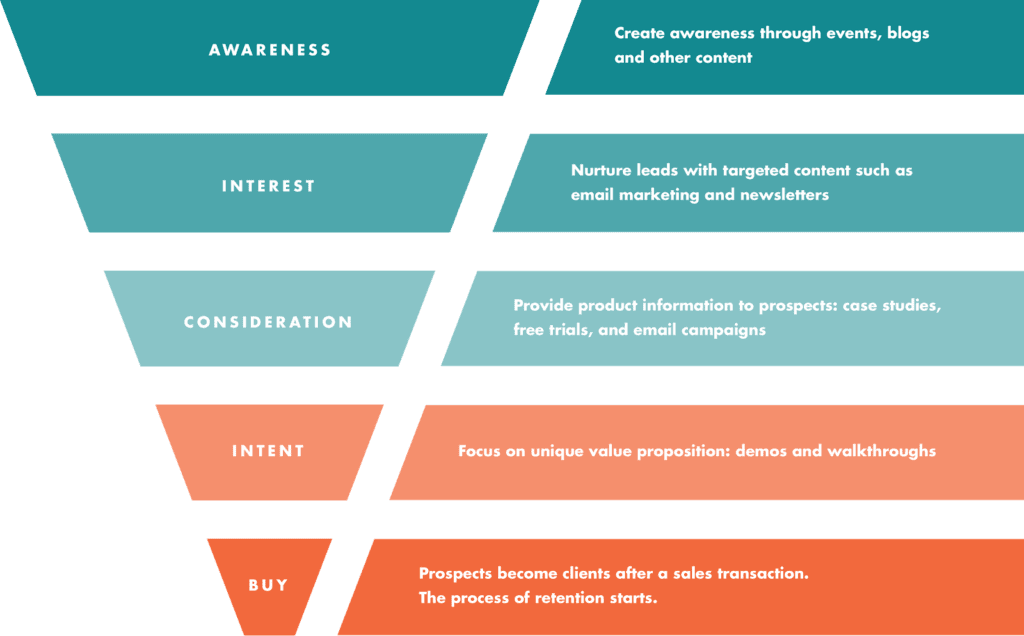
Mixing up your post types to hit all stages of the funnel provides value to prospects at any point in their journey with you — leading to more conversions.
Optimize topics for SEO
Research keyword opportunities around your niche. Then, craft blog headlines and content to target those terms.
For instance, a post titled “How to reduce churn rates” will rank better than a post with a vague title like “Reducing churn.”
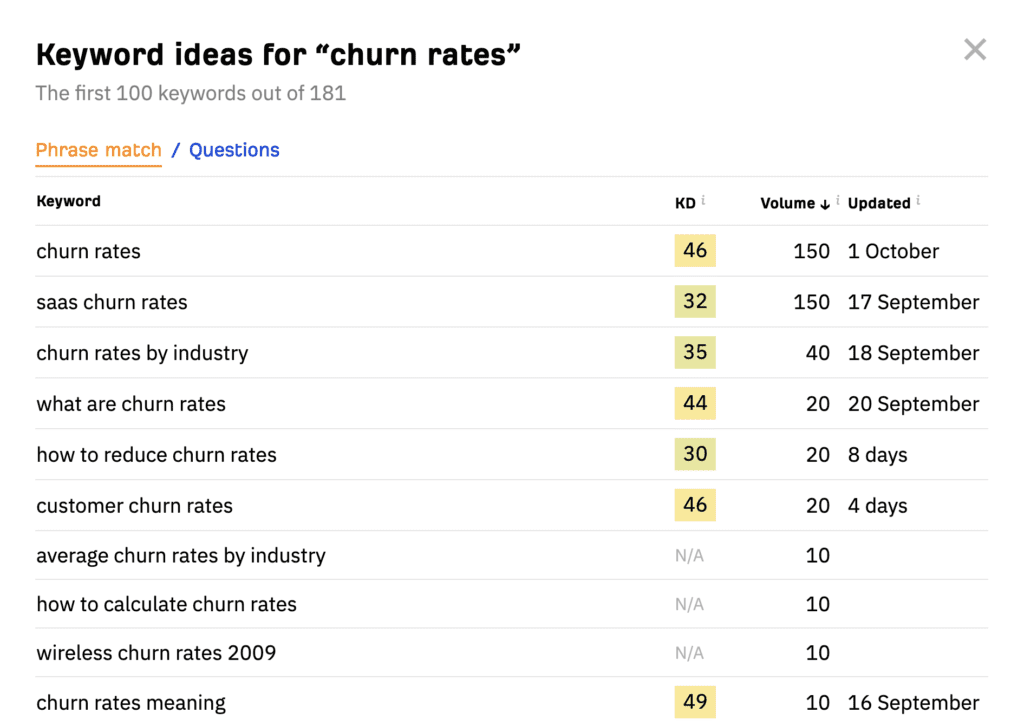
Executing your business blogging strategy
You’ve got your platforms ready, niche selected, and calendar set. Now it’s time to start blogging.
Here are some best practices to succeed:
Make content scannable
The reality? Most people won’t read your posts word for word.
So, use scannable formatting like:
- Subheadings
- Numbered lists
- Bold key points
- Relevant images
- Short paragraphs
- Quotes and testimonials
This makes it easy to skim and digest your content quickly.
Link internally
Internal links help readers navigate your site and show search engines the connections between your content. Link relevant older posts from new ones when possible.
For example, if you reference common SEO mistakes in a newer post about content marketing, link to it so readers can easily check it out.
Promote your blog
Don’t just publish and pray people find your posts.
Actively promote your content on social media, email newsletters, PPC ads, and elsewhere on your site:
- Share each new post on your social channels when it goes live
- Send a monthly roundup email with your top 3 posts of the month
- Feature blog excerpts on your site’s homepage
Get creative here!
Make the most of multimedia
Pictures, graphics, videos, and other media make blog posts more eye-catching and digestible. Use them liberally where it makes sense.
Posts with relevant images get 94% more views than text-only posts according to data published on Hubspot. Videos also tend to boost engagement.
Monitor analytics
Stop guessing what you should blog about. See which posts drive the most traffic and engagement. Then, create more content like your top performers.
Remember, great content doesn’t necessarily have to be new. It can be older posts, improved with the latest insights. It’s smart to revitalize existing content every quarter, updating it with more current information.
This blog post, for example, was originally published in mid-2022. I’m refreshing it now — a year later.
Pro tip: Use tools like Google Analytics to help you identify top-performing content.
Repurpose blog posts into multiple formats
Here’s a common misstep many businesses and founders make:
They simply publish their blog post and consider the job done. Don’t fall into this trap.
Instead, look for opportunities to repurpose it into other formats and channels to amplify your reach.
For example, you could turn a detailed blog into several:
- LinkedIn carousel posts
- Podcast episodes
- YouTube videos
- Instagram reels
The goal is to extract the most mileage from your high-quality blog content. Identify the key stats, facts, and media from each post that translate well into various formats and networks.
Repurposing doesn’t only extend reach — it saves time since you don’t have to come up with totally new ideas or content.
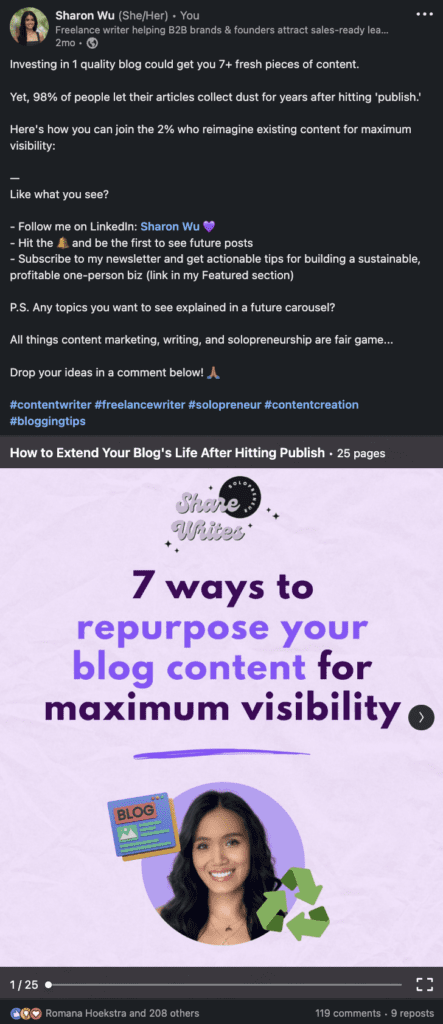
Start your business blog today
The benefits of business blogging are clear, and getting started is easier than you think.
With a smart strategy and consistent promotion, you can quickly build an audience of loyal readers. This leads to more website traffic, improved SEO, lower cost-per-lead, and valuable customer relationships.
Looking for a partner in crafting a results-driven business blog? I help B2B brands and founders attract sales-ready leads through thought-leadership SEO content.
Let’s chat about how a thriving blog can boost your bottom line!
Frequently asked questions (FAQs)
How often should you blog for business?
At a minimum, try to blog at least once per week. Ideally, aim for 2-3 blog posts per week for the best results (but not at the expense of quality). More frequent posting keeps your content and SEO fresh.
How long should a small business blog be?
There is no single ideal blog post length. Aim for 1,000-2,000 words to thoroughly cover a topic with in-depth value while remaining scannable. Mix in shorter posts for variety.
What should you not blog about?
Avoid controversial political, religious, or social justice issues unless they directly relate to your niche. Stick to helpful business-focused topics relevant to your audience.
How do I come up with business blog topics?
Look for commonly asked customer questions and underserved niche topics. Keyword research also helps reveal topics people search for related to your industry. Interview clients about their pain points and write about them.
How do I promote my business blog?
Share links on social media and relevant online communities, integrate posts into email newsletters, and pitch guest posting opportunities to complementary blogs.
This article was updated on 11/14/2023.

